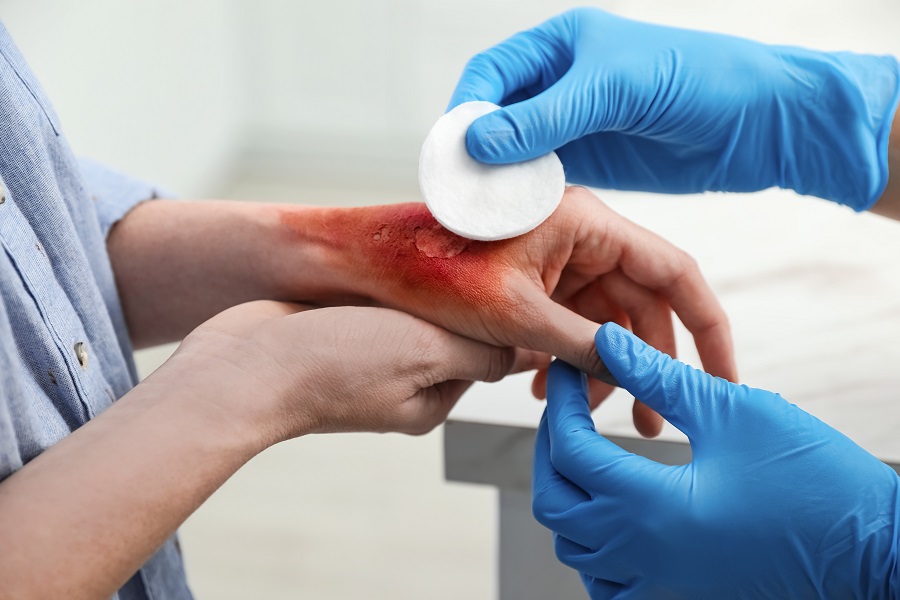When Does a Burn Wound Need Skin Grafts?
 Most often, burns are first degree or superficial second-degree burns, caused by thermal or chemical sources and electrical wires, and only the epidermal layer of the skin gets damaged. These burns typically heal without scarring or lasting effects with topical burns treatment, and skin grafts are rarely needed.
Most often, burns are first degree or superficial second-degree burns, caused by thermal or chemical sources and electrical wires, and only the epidermal layer of the skin gets damaged. These burns typically heal without scarring or lasting effects with topical burns treatment, and skin grafts are rarely needed.
In the case of deep second-degree burns, patients will need skin grafts because their skin is destroyed beyond the epidermis. For deep third degree burns that penetrate all the way down to muscles and bone structures, skin grafts are essential in order to minimize scarring.
On the feet, deep burns can cause deformities either because of the burn or later due to scarring. These deformities can cause pain and foot problems which can be treated and eased with skin grafting.
How Is Skin Grafting Done?
Skin grafting is a common procedure used to treat large or deep burns. A local anaesthetic is used to numb the area and make the procedure as painless as possible. The skin grafts are used to cover a large area or a deep wound that lacks sufficient healthy skin. It is performed by a plastic surgeon in the operating room and the procedure takes 2 to 4 hours.
The procedure involves:
- Removing injured tissue
- Selecting a donor site (Donor site is the area from which healthy skin is removed for grafting.)
- Harvesting the healthy tissue
- Securing the skin graft over the wound
Also Read: TYPES OF BURNS AND TREATMENT OPTIONS
Following surgery, grafting sites should not be moved till the doctor permits. Immobilization prevents damage to the graft and allows the blood vessels to grow into and through the donor skin. At this time, your podiatrist will place elastic bandages over the graft to keep it in place and you will start the rehabilitation process. With the right treatment at a good podiatric clinic, you will be back on your feet in no time.
- Jan 28, 2022
